Enrico Caruso (1873–1921) was one of the most celebrated opera tenors in history. He was also a deft and witty caricaturist — not least of himself, as shown below:
Caruso was prolific and generous with his cartoons, often including them in letters to his fans. They show a wide variety of line styles, from delicate to bold.
Many of them depict him in costume for one of his roles. Below, Caruso as Lieutenant Pinkerton in Puccini’s Madame Butterfly, which he sang in 1906:
As Federico Loewe in Franchetti‘s Germania:
As Don José in Bizet‘s Carmen:
He also caricatured other luminaries of the music world. Giuseppe Verdi:
The Mexican tenor José Mojica:
The conductor Arturo Toscanini, an important figure in Caruso’s life; it was in his 1900 production of Puccini’s La Boheme at the Scala in Milan that Caruso achieved stardom:
The soprano Amelita Galli-Curci, who co-starred with Caruso in Rigoletto:
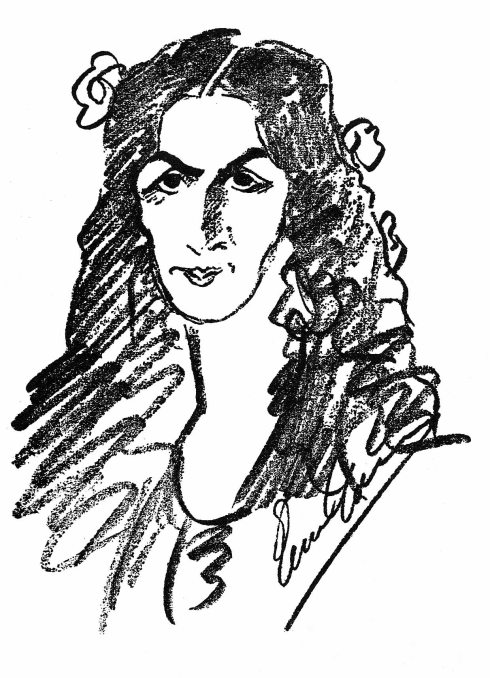
The composer and conductor Gustav Mahler, who was the director of New York’s Metropolitan Opera House when Caruso was engaged there; this portrait was drawn for The Musical Courier magazine.
The composer Leoncavallo, author of I Pagliacci:
Caruso in the role of the clown Canio in I Pagliacci; Caruso’s recording of the opera’s song Vesti la Giubba (“On with the Motley”) was the first record to sell over a million copies:
A recording of Vesti la giubba may be found here.
Click on image to enlarge
Caruso didn’t confine himself to music-realated subjects; here is his rendering of U.S. President Theodore Roosevelt, with whom he was acquainted:
Roosevelt served the superstitious Caruso as a good-luck charm on a day of disaster.
In 1906, Caruso was performing Carmen in San Francisco when the great earthquake and fire destroyed the city. Caruso was found walking the streets, disoriented and weeping, clutching a signed photograph of the President to his chest. He ran into the actor John Barrymore, fresh from a brothel, who persuaded the tenor to sing to calm the panicked crowds.
Caruso’s talent for caricature extended to sculpture, as seen in this bust of himself as a ‘laughing Buddha’, which he presented to Toscanini:
He was not above using his fame to swing lucrative endorsement deals, as we can see from the following advertisement for Pianola– illustrated by the singer:
But he also donated his talents for good causes: below, Caruso mans a quick-sketch booth for charity, drawing Mrs Albert Gallatin.
He published several books of his caricatures and cartoons; this one dates from 1914. I like the cover drawing below best of all his self-portraits:
These ‘transformation’ drawings show a delightful playfulness:
Enrico Caruso’s cartoons all evince a spirit of light mockery without a hint of meanness; seeing them, I can believe that the great tenor would have made excellent company!
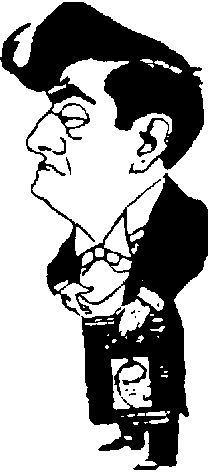

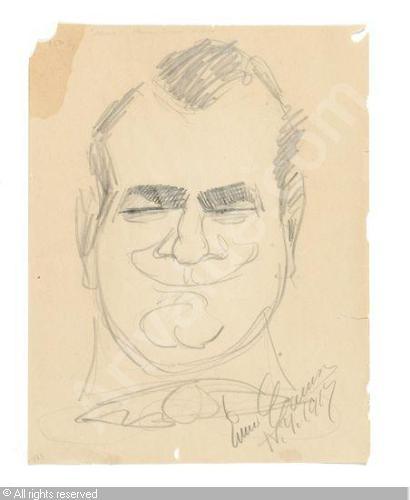
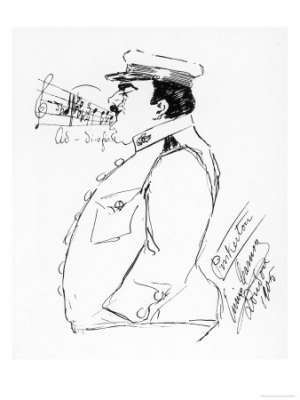
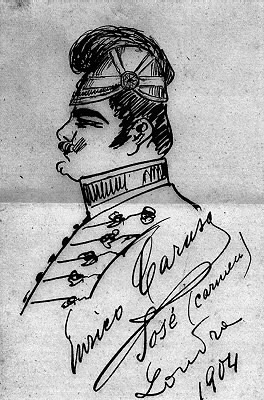

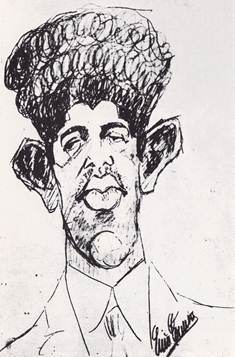

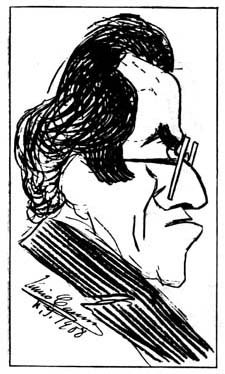

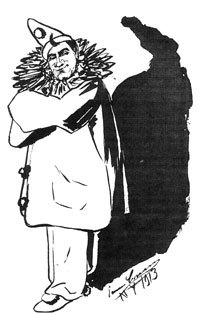
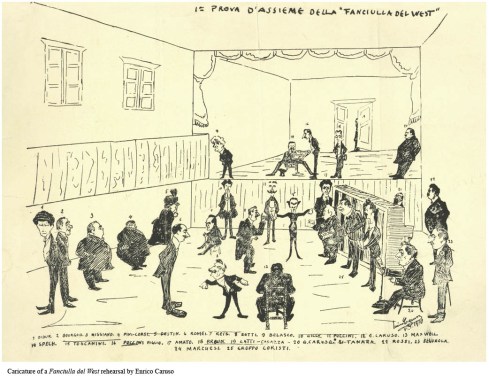
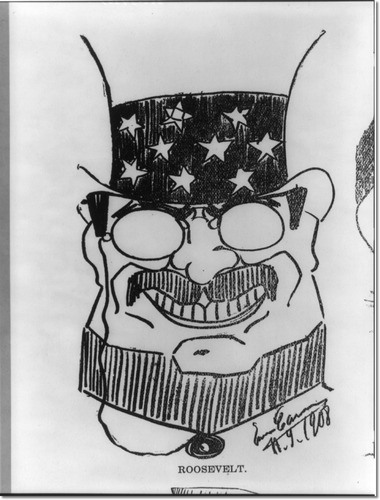
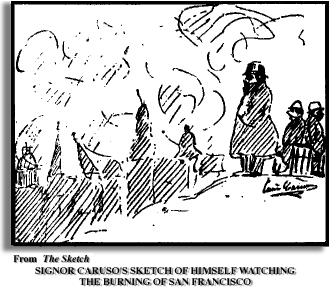
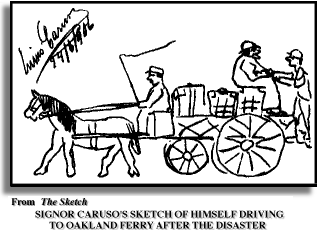
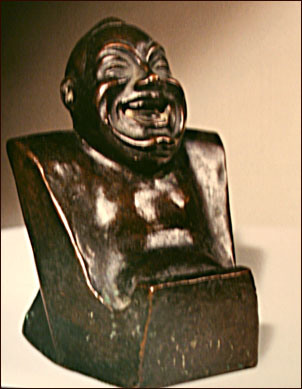
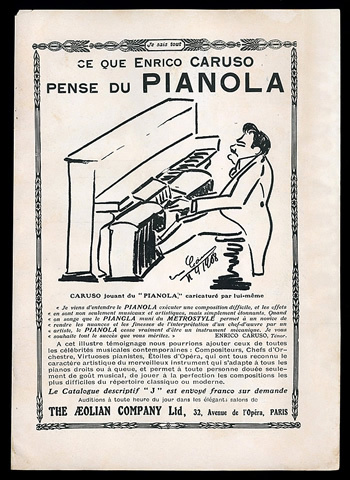
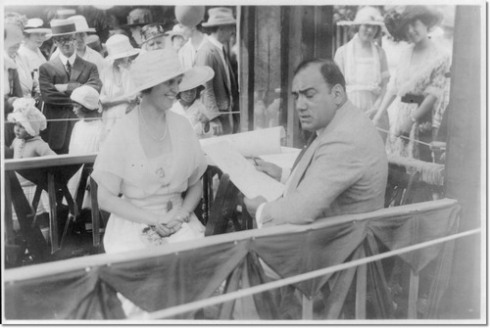
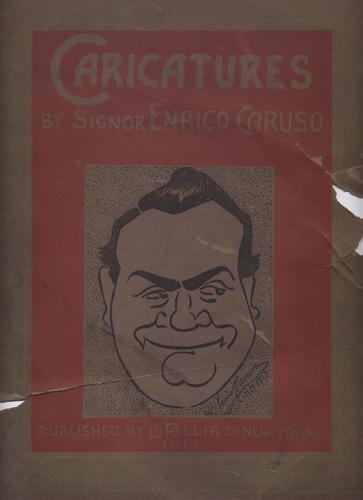
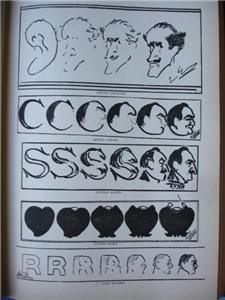
Great stuff, Alex, thanks! (I actually first came to this article via a link in the fine Comics Reporter…)
“…John Barrymore, fresh from a brothel…” …Hah!
Nice and informative! I was similarly surprised when I found out Ronald Reagan was a cartoonist — albeit he was nowhere near as good as Caruso.
Doubtless we will soon be treated to a hardcover collecting the deathless cartooning of James Franco.
Mike, Russ, thanks.
Russ, I knew about Reagan’s cartooning talents; I remember after the Hinckley attempt on his life he sent a very adroit self-caricature from his hospital bed to the press.
Here’s a page of his doodles made during a meeting with Margaret Thatcher:
http://craphound.com/images/President_doodles.jpg
I’m fascinated by the number of amateur and professional cartoonists famous for other things: Benjamin Franklin, William Makepeace Thackeray,Martin Landau, Federico Fellini, John Updike, G.K. Chesterton (who was magnificently gifted), Lewis Carroll,Flannery O’Connor,Gary Cooper, Joan Baez, Joe Hill (the labor organiser, not the novelist)…the list goes on and on!
In general I am interested in the ‘fungibility’ of creativity in talented persons. The great painter Ingres was one of the finest violin players of his time. The philosopher Wittgenstein was also a brilliant engineer, with several pioneering inventions patented by him; likewise the author and philosopher Blaise Pascal, who invented the barometer, the adding machine, and the omnibus!
Pingback: Muzika sobotní noci 12 Enrico Caruso – devatenáctý | Poznámky pana Bavora